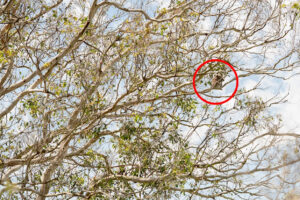
URGENT UPDATE: A groundbreaking study from researchers at Zhejiang University and University of Würzburg reveals that the way we walk significantly alters how our brains process sounds. This research, led by Liyu Cao and Barbara Händel, uncovers vital insights into sensory information processing, highlighting the dynamic interaction between movement and auditory perception.
The study involved thirty volunteers who walked an eight-shaped path while listening to a continuous stream of sound with varying intensities. The findings show that individuals had markedly stronger neural responses to sounds while walking compared to standing still or walking in place. These responses were directly correlated with changes in sound intensity, indicating a heightened auditory awareness during movement.
Notably, the direction of walking played a crucial role in how sound was processed.
“When people made a right turn, responses to sounds from the right ear were enhanced at the beginning of the turn and then suppressed, relative to the responses to sounds from the left,”
said Cao. This suggests a shift in attention during directional changes, which could have significant implications for our understanding of sensory integration.
Moreover, when the researchers introduced bursts of tones into the auditory stream, they disrupted the brain’s associative response. This reaction was strongest while walking, particularly when the sounds were presented to one ear. This finding underscores the idea that our brains might be especially tuned to unexpected auditory cues from our periphery while in motion, enhancing our ability to react swiftly to potential dangers.
Cao elaborated,
“This could reflect a filtering operation of the brain: It might actively suppress predictable background sounds—like our own footsteps—while increasing sensitivity to unexpected sounds from the side.”
This mechanism could facilitate faster reaction times and safer navigation in changing environments, revealing a crucial aspect of how we engage with the world around us.
The study’s implications extend beyond academic interest; they could influence various fields, including robotics, virtual reality, and even urban planning, where understanding human sensory processing is vital. Researchers emphasize that this work, funded by the European Research Council under Grant Number 677819, could lead to better designs for environments that accommodate our natural movement and sensory processing patterns.
As we continue to explore the relationship between walking and auditory perception, the findings of this study remind us of the intricate ways our bodies and brains work together. The full study will be published in JNeurosci, and more details will be available after the official embargo lifts, promising to shed further light on this fascinating intersection of movement and sensory processing.
Stay tuned for more updates on how our physical actions shape our perception of the world.






